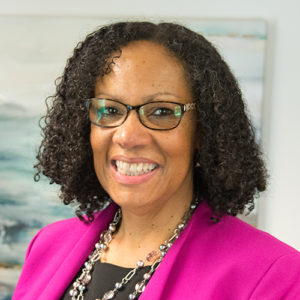
When I came to NC State over 30 years ago, the Americans with Disabilities Act (ADA) did not exist. The university was working towards creating accommodating spaces due to the Rehabilitation Act of 1973.

However, many buildings were not accessible, and there were few accommodations for persons with disabilities. If you were a person who traveled by wheelchair, you could not go through a tunnel, so you had to travel to Dan Allen Drive or Pullen Road to get from north to south campus.
Many professors would become angry at requests to make accommodations in a course. NC State graduate Ron Mace coined the term “universal design,” which is now widely used to describe the concept of designing all products and the built environment to be aesthetic and usable to the greatest extent possible by everyone, regardless of their age, ability, or status in life. Yet we were not an organization that embraced this concept.
Through the dedication of many staff members in equal opportunity, disability resources and facilities, our campus has grown into a place where we are now much more accessible.
Many of the accommodations that exist are helpful to everyone, such as doors that open automatically. As a presenter, these doors help me too, as I often carry loads of workshop materials in a rolling cart and use this resource consistently. My daughter, although not diagnosed with a disability, uses captioning consistently as she watches programs to enhance her viewing experience. Our numbers of faculty, staff, and students with disabilities have increased, likely because the campus is more welcoming for individuals with all types of abilities.
However, challenges still exist. Some buildings have only one accessible entrance. Some professors still push back in making accommodations. Attitudes and behaviors towards persons with disabilities still play out in discriminatory ways.
In a class that I have taught on cultural competence, it was challenging to move students to understand that the greatest challenge for many individuals with disabilities is not their difference but the perception, attitudes, behaviors and decisions made by others because of their disability.
In workshops where I ask individuals to share their identities, individuals with hidden disabilities determine whether or not to disclose their disability based on how they believe the group will perceive them with this new information.
Even well-intended individuals have a bias in their perceptions. These will sometimes play out as microaggressions. Derald Wing Sue defines microaggressions as “everyday verbal, nonverbal and environmental slights, snubs or insults, whether intentional or unintentional, that communicate hostile, derogatory or negative messages based solely upon marginalized group membership.” I experience microaggressions as a Black female. I feel the impact of these as discouraging, hurtful and sometimes exhausting. Persons with disabilities experience such microaggressions as the following.
| Theme | Example | Message |
| Denial of personal identity | “I can’t believe you are married.” | There is not part of your life that is normal or like mine. The only thing I see when I look at you is your disability. |
| Helplessness | Someone helps you onto a bus or train, even when you need no help. | You can’t do anything by yourself because you have a disability. |
| Patronization | “You people are so inspiring.” | You are so special for living with that. |
To be truly inclusive of persons with disabilities, we must move beyond compliance and accommodations to changes in attitudes and understanding.
I hope that in the future, we will rarely think about the ADA because our attitudes and consciousness will have surpassed the need for this legislation. I hope that in the future, we will be to a place where:
- we don’t need to think about compliance because everyone is taken into consideration and we all benefit from universal design;
- we don’t use microaggressions because we understand the experiences of and view the wholeness of persons with disabilities;
- we have classrooms, buildings, programs and activities that don’t need accommodations because the needs of everyone are included in the planning;
- we practice inclusion in language, thought and action;
- individuals with disabilities never worry about how they will be perceived because all aspects of all identities are embraced conceptually and concretely.
Beverly Jones Williams is director of outreach and education in the Office for Institutional Equity and Diversity.